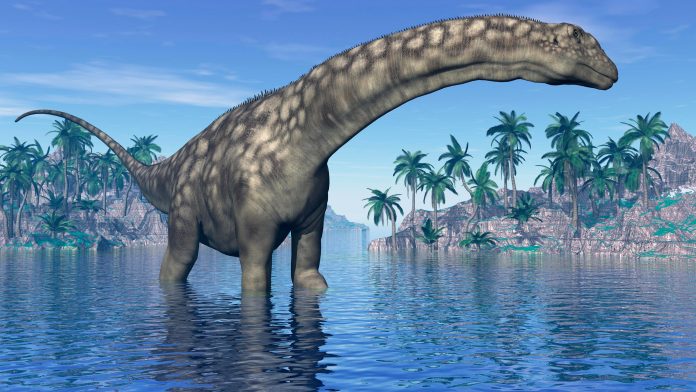How Long Did Dinosaurs Live? A Surprising Look into Their Era
When we think about dinosaurs, it’s hard not to picture those massive creatures roaming the Earth millions of years ago. But a big question often pops up: how long did dinosaurs actually live? It’s a topic that might surprise you, and exploring it gives us a captivating peek into the world long before we showed up.
The Age of Dinosaurs: An Overview
Dinosaurs dominated the Earth during the Mesozoic Era, which lasted about 180 million years! This era is broken down into three main periods: the Triassic, Jurassic, and Cretaceous. Each one brought its own amazing discoveries and changes. Picture the Jurassic Period as the golden age of dinosaurs, full of giant creatures like the Brachiosaurus and fierce predators like the Tyrannosaurus Rex.
While it’s easy to think of dinosaurs as only existing for a short time, they actually thrived for millions of years. This long span laid the groundwork for their evolution and diversity. Fossils show not just bone structures but details about their lifestyles, feeding habits, and even social interactions.
How Long Did Individual Dinosaurs Live?
Now, let’s break the answer down further. It’s tempting to think that all dinosaurs lived a long time, but just like today, their lifespans varied widely depending on the species. Some could live only for a few years, while others might have made it to an impressive 70 or 80 years—like the modern elephants!
For instance, smaller dinosaurs tended to have shorter lives. A baby Velociraptor might only live for about 10-15 years. On the other hand, large dinosaurs like the long-necked Apatosaurus could live for over 70 years. Scientists estimate these ages by looking at the growth rings in their bones, similar to how you can tell a tree’s age by counting its rings.
Natural Habitats and Dinosaurs
The environment where dinosaurs lived also played a huge role in their lifespan. Climate, food availability, and predators all shaped their lives. Dinosaurs had to compete for resources and shelter. As the climate changed, some species thrived while others faced extinction.
The rich habitats of the Mesozoic Era, filled with lush vegetation, fostered diverse ecosystems. Think of it as a giant salad bar filled with options! Herbivores roamed freely, munching on giant ferns and cycads, while carnivores lurked, ready to take a bite out of dinner.
Learning how these creatures interacted with each other helps us understand their lifespans even more. For example, a larger predator had to be stronger and faster, but it also meant it faced more competition and challenges.
Why Did Dinosaurs Go Extinct?
Alongside how long dinosaurs lived, another big question is why they disappeared. Around 66 million years ago, a massive asteroid strike changed everything. The impact triggered wildfires, tsunamis, and an incredibly icy climate. This was a tough time to be alive, and many dinosaurs couldn’t adapt to the changes fast enough.
The extinction paved the way for a new era. Some small dinosaurs survived—those who could fly. Yes, birds are actually modern-day descendants of certain dinosaur species! So, while we think of dinosaurs as a long-gone group, in a way, they’re still part of our world today.
Personal Insights and Reflections
As I ponder the lives of these prehistoric giants, I find it fascinating how much we can learn from them. Their existence teaches us about resilience and adaptation. Imagine living in a world where your environment could change dramatically overnight!
It also reminds us of the importance of taking care of our planet. The challenges dinosaurs faced are echoed in today’s struggles with climate change and environmental threats. If dinosaurs couldn’t adapt to their surroundings fast enough, what does that mean for us? We need to learn from their story.
Why This Matters to Us Today
You might wonder: why should we care about dinosaurs in our modern lives? Well, their ancient battle for survival sheds light on our current environmental issues. Understanding how species adapt—and sometimes don’t—can inform how we tackle today’s challenges.
For instance, the story of the dinosaurs teaches us about biodiversity. When we lose species today, we might not fully understand the impact on the ecosystem. Every living thing plays a role, and like dinosaurs, we need to steer our behaviors towards better stewardship of our planet.
Lessons from the Dinosaurs
In a nutshell, dinosaurs thrived for around 165 million years, showcasing the marvels of evolution and adaptation. Their varied lifespans remind us of resilience, a quality we all need in our lives.
Think about your own experiences. We all face challenges, whether big or small. You might be navigating school, friendships, or family matters. Just as dinosaurs adapted to their environments, we, too, can learn to adjust and thrive amid our personal hurdles.
Conclusion: The Legacy of Dinosaurs
In the end, dinosaurs weren’t just massive reptiles that roamed the Earth—they were part of a grand story that shaped our planet. Their long existence reminds us of nature’s power and the complexity of life.
Remember, while dinosaurs may no longer walk among us, their legacy is still alive through birds—our modern-day dinosaurs! Their journey teaches us valuable lessons about adaptation, survival, and environmental awareness.
So the next time you think of dinosaurs, take a moment to reflect not just on their size and fearsome appearance, but also on the deeper messages their lives can teach us today. What insights might you pull from their story? What changes can we all make to ensure a healthy planet for generations to come? These big questions continue to inspire us to learn, grow, and protect our world.

